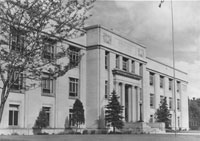Summary 2014 WY 16
Summary of Decision January 28, 2014
Justice Davis delivered the opinion of the Court. Affirmed.
Case Name: MARK S. HICKS, administrator and personal representative of the ESTATE OF JOHNNA R. HICKS v. TUENIS D. ZONDAG, M.D., and CENTRAL WYOMING NEUROSURGERY, LLC.
Docket Number: S-13-0107
URL: http://www.courts.state.wy.us/Opinions.aspx
Appeal from the District Court of Natrona County, the Honorable W. Thomas Sullins, Judge
Representing Appellant: Laurence W. Stinson, Stinson Law Group, P.C., Cody, Wyoming
Representing Appellee: Jeffrey C. Brinkerhoff, Brinkerhoff Law, Jeffrey C. Brinkerhoff, P.C., Casper, Wyoming
Date of Decision: January 28, 2014
Facts: The estate of Johnna Hicks sued Dr. Tuenis Zondag for negligently causing Mrs. Hicks’ death while he was treating her for severe chronic pain. It also claimed that the doctor’s employer, Central Wyoming Neurosurgery, LLC, should be held vicariously liable for his claimed negligence in causing her death. After a nine-day trial, a Natrona County jury found that Zondag was not negligent in his treatment of Hicks and returned a defense verdict. In its timely appeal from the judgment entered on that verdict, the estate poses one question: Did the district court commit reversible error by permitting Zondag and his codefendant to introduce the testimony of two expert witnesses on the doctor’s adherence to the appropriate standard of care for practitioners of pain medicine?
Issue: Did Appellant waive objections to cumulative testimony under Wyoming Rule of Evidence 403 by failing to object at trial after the district court denied a motion in limine on that basis?
Holdings/Conclusion: In its order on the motion in limine filed by Mrs. Hicks’ estate, the district court deferred a definitive ruling on whether the defense could call two standard of care experts until trial. That decision required the estate to object to the testimony of the second expert when the district court could make a meaningful determination under W.R.E. 403. When it did not object, it failed to preserve the issue for appellate review. Affirmed.
Summaries are prepared by Law Librarians and are not official statements of the Wyoming Supreme Court.
[SPECIAL NOTE: This opinion uses the "Universal Citation." It was given an "official" citation when it was issued. You should use this citation whenever you cite the opinion, with a P.3d parallel citation. You will also note, when you look at the opinion, that all of the paragraphs are numbered. When you need to provide a pinpoint citation to a quotation, the universal portion of the citation will use that paragraph number. The pinpoint citation in the P.3d portion will need to have the reporter page number. If you need assistance in putting together a citation from this, or any future opinion using the Universal Citation form, please contact the Wyoming State Law Library and we will provide any needed assistance.]


